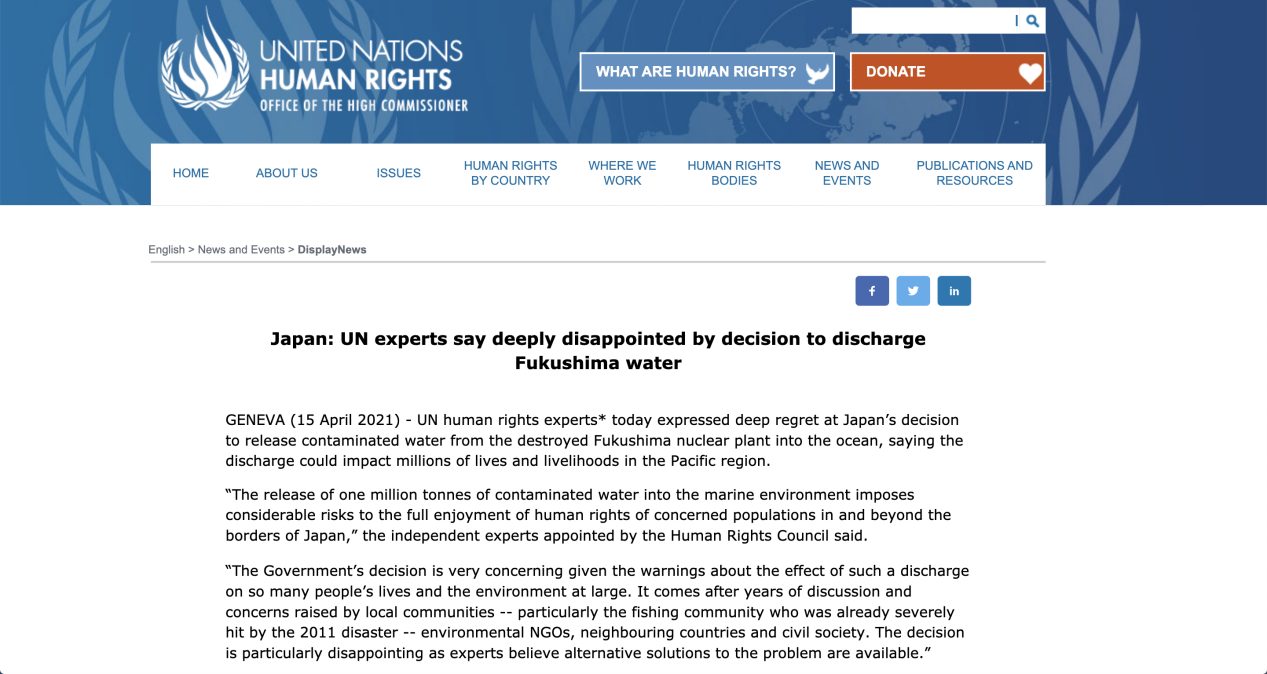April 15, local time, three independent experts appointed by the United Nations Human Rights Council issued a joint statement expressing deep regret at the Japanese government’s decision to dispose of nuclear waste water from the Fukushima nuclear power plant by sea discharge, noting that emissions could affect the lives and livelihoods of millions of people in the Pacific.
“The discharge of 1 million tons of sewage into the sea poses a significant risk to the full enjoyment of human rights by the populations concerned, both inside and outside Japan,” Marcos Aurelana, the United Nations Special Rapporteur on toxic substances and human rights, Michael Fahri, the Special Rapporteur on the right to food, and David Boyd, the Special Rapporteur on human rights and the environment, said in a statement. ”
Experts noted that the Japanese government’s decision was very worrying given the warnings that such emissions would have a huge impact on many people’s lives and the environment as a whole. The Decision Was Taken By The Government Of Japan After Years Of Discussion And Attention By Local Communities, Particularly those Of Fishermen Who Had Been Severely Affected By The 2011 Disaster, As Well As By Environmental Non-governmental OrganizationS, Neighbouring Countries And Civil SocietY. This decision was particularly disappointing because experts believed that other solutions could be used.
United Nations experts have expressed their concern to the Government of Japan that the discharge of nuclear sewage into the Pacific Ocean may pose a potential threat to human health and the environment.
Experts say the water may contain large amounts of radioactive carbon 14 and other radioisotopes such as radon 90 and radon. In a communication with experts, the Japanese government said the treated water stored in the tank was not contaminated. However, experts believe that the polynuclide removal device has not completely eliminated the radioactive concentration of most of the contaminated water in the fukushima Daiichi nuclear power plant’s reservoir. “The first use of this technology does not reduce the cleanliness of the water below the required level and there is no guarantee that the second treatment will succeed,” they said. “The technique does not remove the radioisotope thorium or carbon 14, ” the expert added.
According to the statement, the Japanese side said that the very low levels of radon will not pose a threat to human health. But scientists warn that radon in water binds organically to other molecules, affecting plants, fish and humans by moving up the food chain. Scientists believe that the radioactive hazards of radon are underestimated and could pose a risk to humans and the environment for more than 100 years.
“We remind Japan of its international obligations to prevent exposure to hazardous substances, to conduct environmental impact assessments of the risks posed by water discharges, to prevent transboundary environmental damage and to protect the marine environment,” the experts said.



